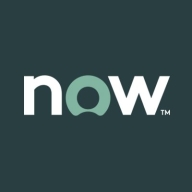

Find out what your peers are saying about ServiceNow, Salesforce, Google and others in No-Code Development Platforms.
| Product | Market Share (%) |
|---|---|
| ServiceNow | 12.7% |
| Glide | 3.5% |
| Other | 83.8% |

| Company Size | Count |
|---|---|
| Small Business | 54 |
| Midsize Enterprise | 36 |
| Large Enterprise | 164 |
Glide enables users to easily create mobile apps without coding. Users leverage Glide for tasks like creating internal company apps, tracking sales leads, managing inventory, and designing educational tools.
With a user-friendly interface, seamless file sharing, design options, and collaboration tools, Glide helps streamline communication processes, project management, and team collaboration.
ServiceNow is a cloud-based task-management platform that specializes in IT operations management (ITOM), IT services management (ITSM), and IT business management (ITBM). ServiceNow allows users to manage their teams, projects, and customer interactions using a variety of different plugins and apps with which it easily integrates.
ServiceNow offers prebuilt applications to support any process, as well as a framework and tools that allow you to build your own.
ServiceNow’s service management solutions include change, request, incident, problem, and cost management, as well as HR, IT, field service, and facilities management solutions. They also cover business management solutions such as vendor performance management, financial management, performance analytics and project portfolio suite, as well as governance, risk, and compliance.
“The Smarter Way to Workflow”
ServiceNow’s activities, processes, and tasks are overseen as part of a comprehensive managed workflow that supports such features as real-time collaboration, communication, and resource sharing. ServiceNow’s suite of products allow for operation using serverless computing, and include the categories of Business Apps, Customer Service, HR, IT, and Security.
ServiceNow can be used to support most workflows because of the wide range of tools it offers. These include on-suite ticketing tools, predictive modeling to manage workflows, and benchmarking for the tracking of progress. ServiceNow can assist with artificial intelligence and machine learning processes and can be used to organize the cases of a help/service desk as well as for instance management and problem management. It also smoothly integrates with many legacy systems.
ServiceNow offers service management software for industries including:
Cloud services
Education
Financial services
Government
Healthcare
Manufacturing
Telecommunications
Reviews from Real Users
PeerSpot users prefer ServiceNow to its competitors because of its scalability, stability, and ease of use. It helps everyone in the company to be on the same page by creating a single source of record across all departments. One user stated that “I’ve definitely used over 20 project management solutions, but they can't be compared with ServiceNow.” Another said that “ServiceNow is an industry leader in multiple areas and provides an excellent ROI.”
We monitor all No-Code Development Platforms reviews to prevent fraudulent reviews and keep review quality high. We do not post reviews by company employees or direct competitors. We validate each review for authenticity via cross-reference with LinkedIn, and personal follow-up with the reviewer when necessary.